Sold antiquities
Archive of sold antiquities
All artefacts sold in our gallery are fully documented in our online archive and database. Being a specialist ancient art dealer, preserving also the more recent history of each and every piece sold in our shop is at our heart. That is particularly useful for artefacts that changed owners in the meantime. Information that may have been lost in the process can be easily restored from our archives. Please do not hesitate to contact us if you need further information about ancient items that have been sold in our gallery. We can help you with reconstructing the history of ownership for those items. All information about our customers will be kept confidential, of course.-
 Pair of pins with chain
Pair of pins with chainThe pair of pins dates to the early Iron Age of Luristan. It is made from Bronze and Iron. This state of preservation is extremely rare for composite objects.
Price: on request Spoked disc brooch from Roman Britain
Spoked disc brooch from Roman BritainThis is an extremely rare variant native to Roman Britain. Hattatt mentions that only 13 specimen of this type are known to exist.
Price: on request Banded glass amphoriskos
Banded glass amphoriskosEarly example of ancient glass blowing. Transparent brown glass with white and red decorative bands.
Price: on request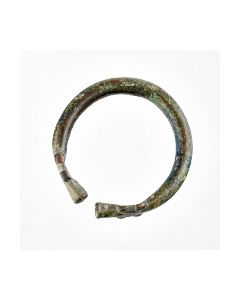 Bracelet from Luristan with animal terminals
Bracelet from Luristan with animal terminalsA high degree of abstraction for the animal heads and a wonderful blue patina make this piece a highlight for Iranian bronze works.
Price: on request Bracelet from Luristan with triangular terminals
Bracelet from Luristan with triangular terminalsThe bronze braclet is band shaped and has linear engravings on the outer side.
Price: on request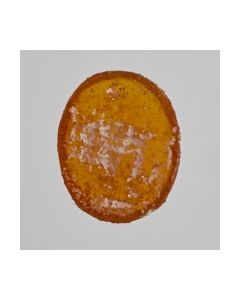 Roman intaglio with Poseidon
Roman intaglio with PoseidonThe naked god of the see from Greek mythology is standing on a bow symbolizing his power over seafaring. The scene is framed by ascending air bubbles.
Price: on request Roman intaglio with Jupiter
Roman intaglio with JupiterThe Roman king of the gods is sitting on a throne, leaning on the sceptre. Victoria is on his right hand crowning Jupiter with a wreath. An eagle is sitting at the feet of the god.
Price: on request Roman marble portrait of a goddess
Roman marble portrait of a goddessRoman Imperial copy of a classical Greek original. Coming with an Art Loss certificate.
Price: on request Hellenistic marble portrait of a youth
Hellenistic marble portrait of a youthPossibly Ptolemaios III or IV or a private portrait following the official style.
Price: on request Roman sandstone head of a Nubian prince
Roman sandstone head of a Nubian princePerfectly preserved impressive portrait from Californian collection, prior to this in an old German collection.
Price: on request Large Roman mosaic of a capricorn hunt
Large Roman mosaic of a capricorn huntVery large, perfectly preserved polychrome mosaic from a Jerusalem collection.
Price: on request Roman marble inscribed stele with funereal scene
Roman marble inscribed stele with funereal sceneImpressive and very fine preserved piece from an old British collection.
Price: on request Cypriot bowl from the famous Severis collection
Cypriot bowl from the famous Severis collectionPerfectly preserved piece with very vivid bichrome decoration. Ex Christie's.
Price: on request Cypriot amphora from the famous Severis collection
Cypriot amphora from the famous Severis collectionEx Fortnum and Mason, London, UK. Impressive piece.
Price: on request Rare precursor of a bell krater
Rare precursor of a bell kraterFirst half 7th century BC, possibly slightly later. Decorated with geometric motifs. Very interesting, unpublished shape.
Price: on request Published Krater attributed to the Nicholson painter
Published Krater attributed to the Nicholson painterImpressive, very large and perfectly preserved vase with thermoluminescence expertise.
Price: on request Perfectly preserved Apulian bell krater with satyr
Perfectly preserved Apulian bell krater with satyrLarge vase used for watering down wine in Ancient Greece. With ArtLoss Certificate.
Price: on request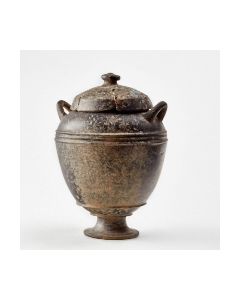 Etruscan bucchero urn with lid - found in Cerveteri
Etruscan bucchero urn with lid - found in CerveteriEarly 6th century BC. Perfectly preserved, from an old Swiss collection before 1930.
Price: on request 9 römische Fibeln und 7 römische Metallobjekte
9 römische Fibeln und 7 römische MetallobjekteGruppe von Fibeln und anderen Metallobjekten.
Price: on request

 Roman bronze jar
Roman bronze jarMassive piece with beautiful ram head shaped handle, 1st-2nd century AD
Price: on request Greek bronze olpe
Greek bronze olpePerfectly preserved, massive piece with beautiful dark patina, 6th-5th century BC. With ArtLoss Certificate.
Price: on request Roman bronze head of Medusa w. silver inlays
Roman bronze head of Medusa w. silver inlaysPerfectly preserved, massive piece of ancient art with beautiful green patina, 1st - 2nd century AD
Price: on request Roman amphoriskos with Calydonian Boar
Roman amphoriskos with Calydonian BoarPerfectly preserved, impressive piece from old German collection
Price: on request Scarab of pharao Seti I.
Scarab of pharao Seti I.The Egyptian scarab bears a hieroglyphic inscription which can be read as the name of pharao Seti I. From the Ramesside period, around 1300 BC.
Price: on request Scarab with sphinx and Maat
Scarab with sphinx and MaatThe piece from the Ramesside period shows the goddess of truth and justice. Next to her is a name, probably that of pharao Mencheperre, who is famous as Thutmosis III.
Price: on request Egyptian amulet of Shu
Egyptian amulet of ShuGod of the air and the sun. The highly stylized figurine shows the ancient Egyptian god on his knees, the arms raised towards the sun. From a British private museum.
Price: on request Egyptian faience figurine of the dwarf god pataikos
Egyptian faience figurine of the dwarf god pataikosThe figurine was supposed to have a magical protective function. 26th to 30th dynasty of Ancient Egypt. From a British private museum.
Price: on request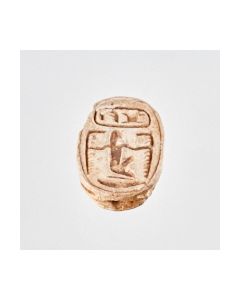 Scarab with god Heh and cartouche
Scarab with god Heh and cartoucheInteresting motive showing the kneeling god of endlessness with palm stem in both hands. Above him the cartouche of pharao Mencheperre. Around the 18th dynasty of ancient Egypt.
Price: on request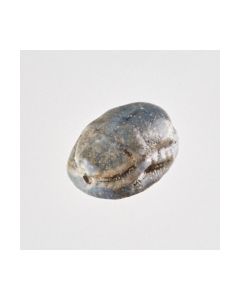 Scarab with blue fayence glaze
Scarab with blue fayence glazeThe piece is from the Third Intermediate Period or the Late Period of ancient Egypt. The inscription refers to Amun-Re, the main god of Theben. The glaze is shining in vivid blue colour.
Price: on request Luristan silver bracelet with interesting decoration
Luristan silver bracelet with interesting decorationThe bracelet is massive yet elegant. Crossed lines and open circles are engraved on its surface. It is a beautiful piece from the Iron Age of Luristan.
Price: on request Massive bracelet from Luristan
Massive bracelet from LuristanThe bracelet has an interesting decoration on the outer side. It is a heavy and impressive bronze object.
Price: on request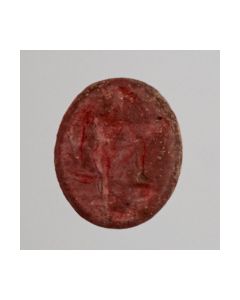 Roman intaglio with triumphant warrior
Roman intaglio with triumphant warriorThe violet intaglio shows a naked warrior stepping on his dead enemy. He holds the separated head in his hand.
Price: on request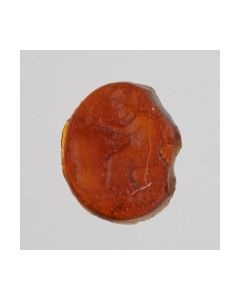 Roman intaglio with craftsman
Roman intaglio with craftsmanThe ancient intaglio from Roman times shows an elderly man who is working an oval shield with a hammer. It is an interesting representation of a craftsman at work.
Price: on request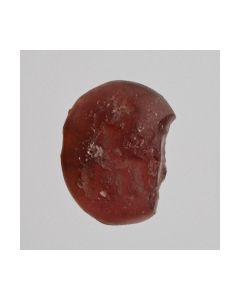 Roman intaglio with Minerva
Roman intaglio with MinervaThe intaglio depicts the goddess from etrusco-italic mythology sitting on a throne with her shield. Minerva was the protector of the crafts and commerce.
Price: on request

